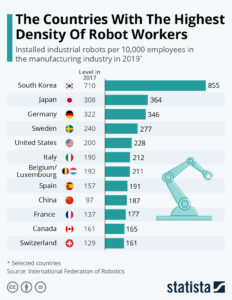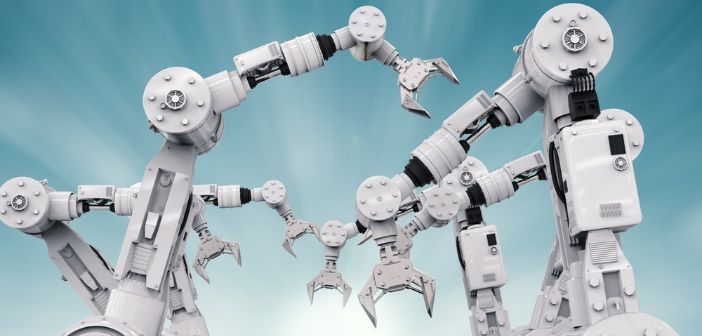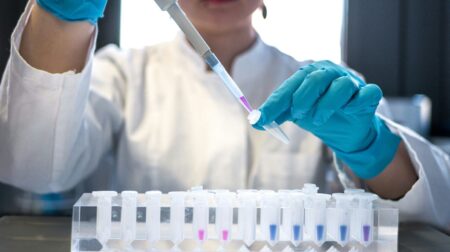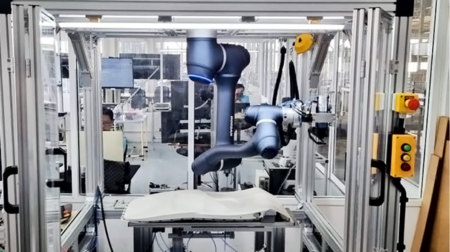Research by the International Federation of Robotics (IFR) has revealed that there is, on average, over 100 installed industrial robots per 10,000 workers across the global manufacturing industries.
The IFR saw this figure increase to 113 from 74 in 2016, with Asia leading the way with a robot density of 118 units, while Europe trailed with 114 units per 10,000 workers and the Americas averaging 103 units.
The automotive industry remains the largest adopter of robots, with Germany and Japan – renowned for automotive manufacturing – reported to have density levels of around 350 robots per 10,000 workers.
According to the IFR, manufacturers of hybrid and electric cars are experiencing high demand for a wider variety of car models and a substantial proportion of the production processes require automation solutions using robots due to the complex nature of manufacturing.

Furthermore, the challenge of meeting 2030 climate targets will require new cars to be low- and zero-emission vehicles. The IRF therefore predicts automotive manufacturers to invest further in collaborative applications.
The data also shows that the electronics industry is catching up with the automotive sector, with sales of industrial robots increasing by 22%.
The IFR said the need to automate production has increased demand, with robots able to handle very small parts at high speeds and with high degrees of precision, enabling electronics manufacturers to ensure quality whilst optimising production costs. South Korea especially continues to install high volumes of robots in its electronic sector.
Junji Tsuda, president of the IFR, said: “Robots evolve with many cutting-edge technologies. They are vision recognition, skill learning, failure prediction utilising AI, new concept of man-machine-collaboration plus easy programming and so on. They will help improve productivity of manufacturing and expand the field of robot application.”
The IFR said it expects that the annual number of robots supplied to factories around the world will reach around 630,000 units by 2021.








